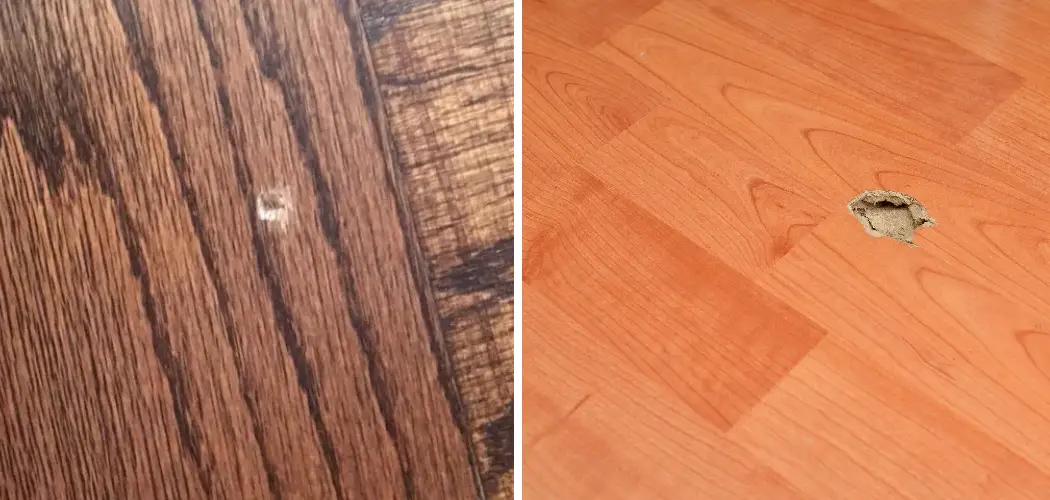Have you ever stepped on a piece of hardwood flooring in your home, only to find that it was chipped or scratched underneath? Not only is this unsightly, but it can cause damage to the surface and leave permanent marks.
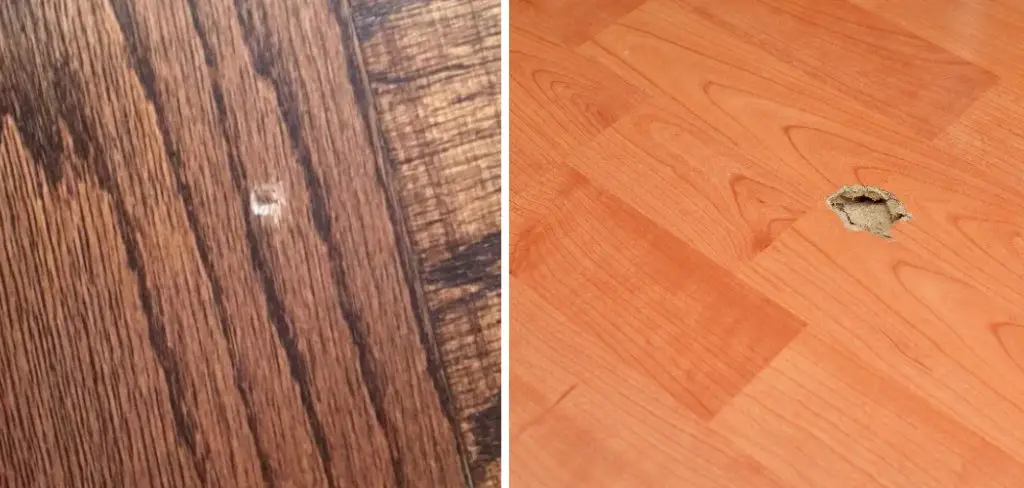
Thankfully, with some tools and supplies that are relatively inexpensive and easy to obtain, repairing minor chips or scratches in hardwood floors can be made simple. In this blog post, we’ll go over the various methods of how to repair chipped hardwood floor so you can get your beautiful hardwood looking brand new again!
Chipped, fading, and scratched hardwood floors can be a frustrating sight. But don’t worry – there are several simple steps that you can take to repair and restore your chipped hardwood floor in no time! In this blog post, we’ll walk through everything you need to know to swiftly repair a damaged wood flooring surface: from how to assess the problem to selecting the right tools and materials for each job.
What Causes Chipped Hardwood Floor?
1 . Accidental Damage
Accidental damage is the most common cause of chipped hardwood floors. Things like dropped furniture, high-heeled shoes, pets’ claws, and heavy objects can all cause small chips on your wood floor.
2 . Wear & Tear
Over time, hardwood floors will naturally wear down from frequent use and foot traffic. This can cause the edges of your floor to chip and break away, resulting in a chipped hardwood floor.
3 . Poor Installation
Sometimes, poorly installed floors may be more susceptible to chipping. If your wood planks don’t fit tightly together or have been improperly nailed down, they are more likely to chip under pressure and as a result of everyday wear and tear.
10 Repair Methods: How to Repair Chipped Hardwood Floor
If you’ve noticed small chips in your hardwood floor, don’t worry – these can be easily repaired. Here are some methods to fix chipped hardwood floors:
1 . Filling the Chip
The quickest and easiest way to repair a chipped hardwood floor is to fill the chip. You can use wood filler, putty, or even glue mixed with sawdust to fill in any small chips in your flooring. But make sure to match the color of your fill material with that of your floor.
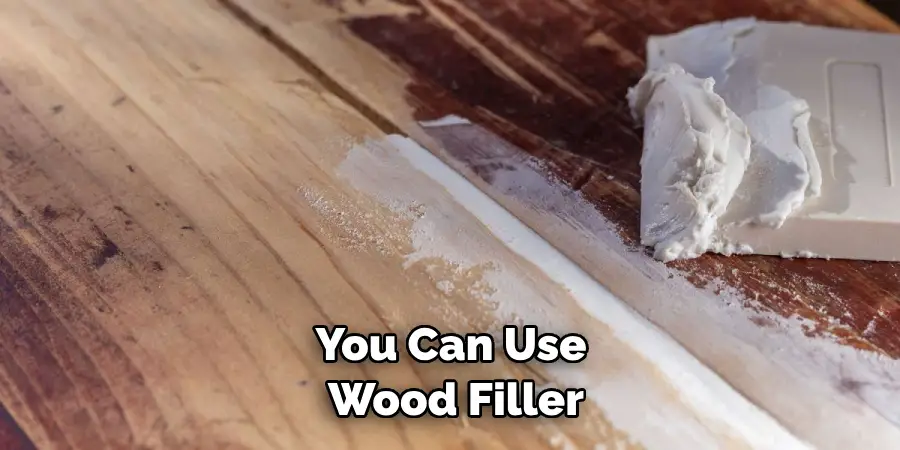
2 . Sanding & Refinishing
Another way to repair chipped hardwood floors is by sanding them down and refinishing them. This may be necessary if you have larger chips or scratches in your wood floor. You’ll need to use a sander to sand down the area and a sealer to seal in the finish.
3 . Replacing Damaged Planks
If your hardwood floor has large chips or is significantly damaged, you may need to replace the planks that are chipped. This can be done by taking out the damaged boards and replacing them with new ones, making sure to match the color and type of wood.
4 . Applying a Stain or Varnish
If your hardwood floor is looking a bit dull, you can apply a stain or varnish to it to give it an extra boost of color and shine. Make sure to use an oil-based stain that matches the existing color of your floor. You can also use a varnish to make it look like new again.
5 . Using a Repair Kit
There are various repair kits available on the market that are designed specifically for repairing hardwood floors. These kits come with all the tools you need to repair chips and scratches in your floor, as well as instructions on how to do it correctly.
6 . Hiring a Professional
If you’re not confident in doing the repair yourself, you can always hire a professional to do the job for you. A professional flooring contractor will be able to assess the damage and provide a solution that best suits your needs.
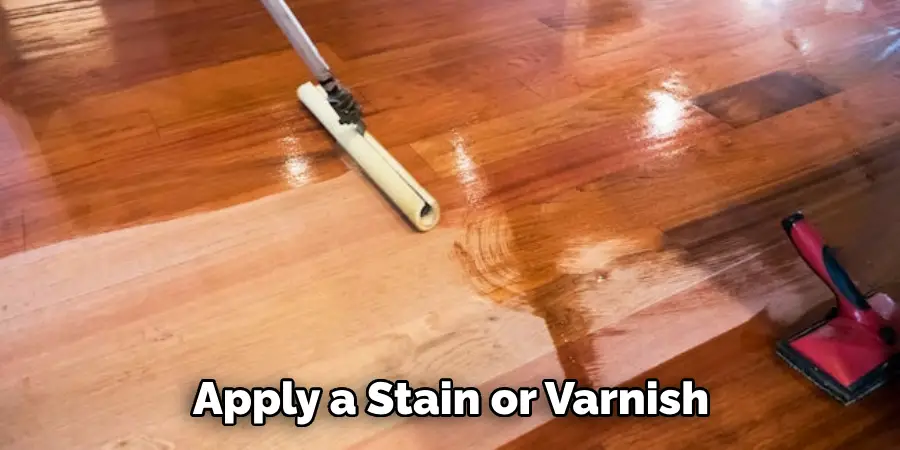
7 . Applying Putty or Wood Filler
Putty and wood filler are great for filling in small chips and cracks in your hardwood floor. Make sure to choose a putty or wood filler that matches the color of your flooring, as well as one that is suitable for hardwood floors.
8 . Applying Wax Stick
If you have large chips and cracks in your hardwood floor, you can use a wax stick to repair it. Wax sticks are designed specifically for wood floors and come in a variety of colors to match the existing color of your floor.
9 . Using Epoxy
Epoxy is another great way to repair chipped hardwood floors. You will need to mix the epoxy with sawdust to create a paste, which can then be used to fill in any chips or cracks.
10 . Applying Polyurethane Finish
Finally, you can apply a polyurethane finish to your hardwood floor to protect it from further damage. This will provide an extra layer of protection and help keep your floor looking great for years to come.
These are just a few of the methods you can use to repair chipped hardwood floors. Regardless of which method you choose, make sure to follow the instructions carefully and use the right materials so that your repairs last for years to come. With all these options, there’s no reason why your chipped hardwood floor can’t look like new again.
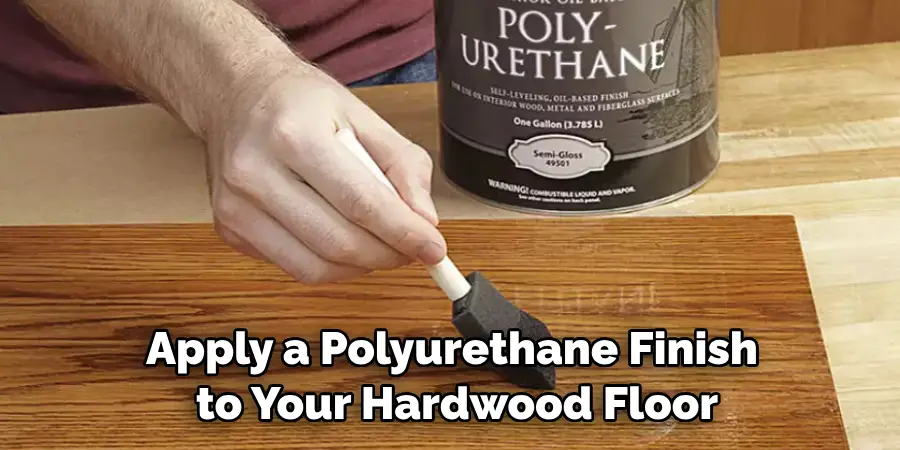
Tips for Protecting Your Hardwood Floor
Once you’ve repaired the chipped hardwood floor, it’s important to take steps to protect it from further damage. Here are some tips for protecting your hardwood floor:
1 . Place Rugs and Mats in High-traffic Areas
Placing rugs and mats in high-traffic areas will help prevent chips from occurring in the future. This is especially important if you have pets or small children who may accidentally cause damage to your flooring.
2 . Use Furniture Pads
Using furniture pads on the bottom of your furniture pieces can also help protect your floor from any accidental scratches or chips. This is especially important for chairs and tables that are frequently moved around the room.
3 . Clean Regularly
Regular cleaning can help prevent dirt, dust, and grit from accumulating on your hardwood floor and causing damage over time. You should sweep or vacuum your floor regularly to keep it looking its best.
4 . Avoid Abrasive Cleaners
Using harsh or abrasive cleaners on your hardwood floor can cause it to chip and scratch over time. Instead, use a mild cleaner that is specifically designed for hardwood floors.
By following these tips, you can help protect your chipped hardwood floor from further damage and keep it looking great for years to come. With a bit of care and maintenance, your hardwood floor can look like new again.
Frequently Asked Questions
What Precautions Should I Take Before Starting to Repair Chipped Hardwood Floors?
Before you begin to repair chipped hardwood floors, it is important to take the time to ensure that the source of the problem has been identified and addressed. Inspecting the area for any safety hazards and making sure that all necessary precautions have been taken will go a long way in helping you avoid further damage.
Make sure that all of the necessary tools and materials have been gathered before you get started. Additionally, if you are not comfortable tackling the repair yourself, it is best to enlist a professional’s help.
How Can I Remove Chipped Hardwood Floor Pieces Safely?
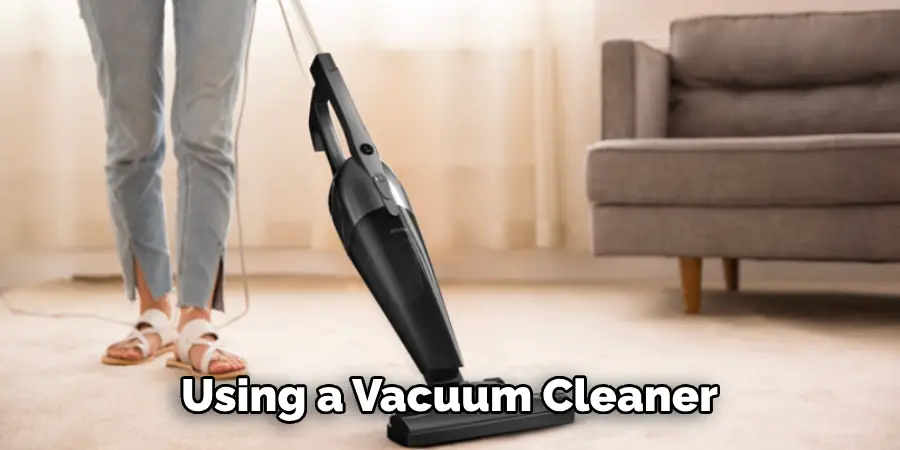
When attempting to remove chipped hardwood floor pieces, it is important to take safety precautions. First, make sure that you are wearing protective gloves to avoid splinters or other potential injury while handling the pieces. Secondly, use a chisel with a dull edge and hammer it gently in order to work the pieces away from the floor. Finally, using a vacuum cleaner attachment can help you safely remove any remaining debris.
What Materials Do I Need To Repair Chipped Hardwood Floor?
When repairing chipped hardwood floors, it is important to have all of the necessary materials on hand. You will need a chisel, hammer, wood putty, sawdust, wood stain or paint (optional), and protective gloves. Sandpaper and steel wool may also be needed depending on the severity of the chip. Additionally, having a vacuum cleaner attachment or brush handy can be helpful for cleaning up any debris that may have been left behind.
Conclusion
After reading this blog post, you now have a comprehensive understanding of how to repair chipped hardwood floor. First, analyze the damage and determine what type of repair is needed. Next, fix the subfloor near where the chip is located.
Third, purchase wood fillers and/or stain markers that best match the color of your wood floorboards for those deep holes in the hardwood floor. Lastly, clean up any mess you made during the process and touch up any mistakes with sandpaper or additional wood filler.
Hopefully, with this guide, you can easily go through the steps to make sure your chipped hardwood looks as good as new! Don’t give up just because a chip or two appear; reach out to professionals if needed and get it fixed in no time!

